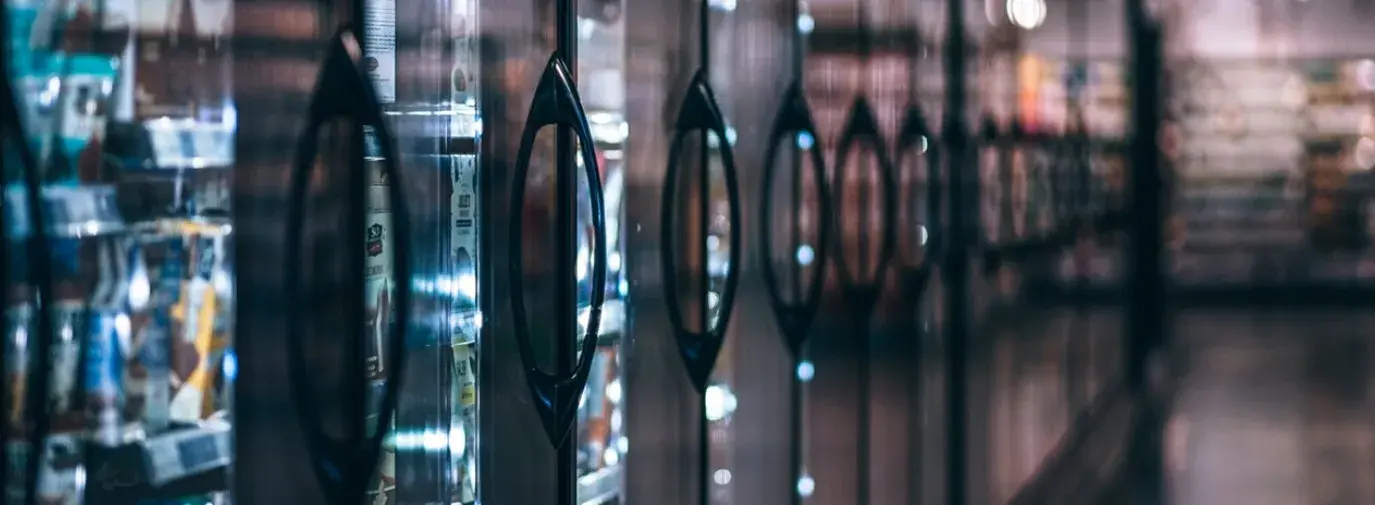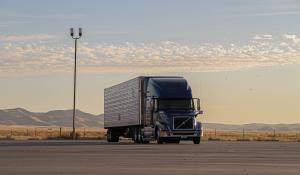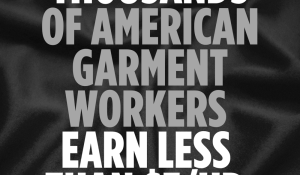
1) What are HFCs and how are they different from CFCs?
Hydrofluorocarbons (HFCs) are greenhouse gases containing carbon, hydrogen, and fluorine. They are entirely human-made and do not occur in the natural environment. HFCs are used as refrigerant to promote cooling in appliances such as refrigerators and air conditioners.
Decades ago, appliances used chlorofluorocarbons (CFCs) as refrigerants, which wreaked havoc on the ozone layer and were phased out after the 1987 Montreal Protocol. They were replaced by hydrofluorocarbons (HFCs), which do not deplete the ozone, but they do have up to 9,000 times greater warming capacity than carbon dioxide.
2) Where are HFCs found? And when are they the most dangerous?
HFCs are used as refrigerants in air conditioners, freezers, and refrigerators (secondary sources are aerosols, foams, and fire extinguishers). A staggering 90 percent of HFC emissions occur during leaks or improper disposal of refrigerants.
3) Who are the major contributors?
The United states is the biggest emitter of HFCs of any country in the world (followed by China), yet it has not ratified the Kigali Amendment. The 2016 Kigali Amendment to the Montreal Protocol seeks to phase down HFCs. In 2019, developed countries who ratified the Kigali Amendment agreed to reduce the use of HFCs by 80 percent within the next 30 years.
Supermarkets are a major source of HFCs, and they need to be held accountable for poor refrigerant practices. It’s estimated that a quarter of refrigerants in an average supermarket leaks out through faulty systems, emitting the equivalent of 45 million metric tons of CO2 every year, equal to the emissions of 9.5 million cars.
4) What are the risks for the planet?
HFCs are extremely potent contributors to the Earth’s warming. Around the world, as more people rely on air-conditioning to cope with severe heat, the HFCs that routinely leak out of appliances and into the atmosphere have become the fastest-growing type of greenhouse gas emitted in every country on Earth.
These gases escalate the climate crisis, which is already causing harm and even devastation to communities and the environment. As CO2 (Carbon dioxide) and other greenhouse gases like HFCs increase, radiation (and therefore temperature) also increases. Warming water and melting ice are driving up sea levels, threatening many archipelagos and lowlands, such as the Netherlands and Bangladesh. The 21st century is the first to see the appearance of climate refugees. If the darkest predictions come true, archipelago nations like the Maldives could be wiped off the map. The UN has given a ten-year deadline to make major changes in our economy to radically reduce emissions.
Refrigerant management has been cited as a top solution to cutting climate change-causing emissions and could cut nearly 90 gigatons of CO2 equivalent from our emissions, the equivalent of burning over 600 trillion metric tons of coal. Raising awareness on the impact of refrigerants and urging companies to improve practices will help address the larger global environmental and social justice issues that are caused by the climate crisis.
5) What threat does the climate crisis pose to human health?
Climate change will continue to have escalating impacts on human societies. Agricultural and fishery production will be affected as will water resources. According to the World Bank: more than 100 million people could fall into extreme poverty from climate impacts by 2030 and nearly 600 million could suffer from malnutrition by 2080. A warming of 2 to 3 ° C would be enough to increase the number of people exposed to malaria by five percent . According to the latest United Nations report on climate change, the rise in temperature along with population growth will increase the risk of transmittable diseases such as dengue fever, one of the primary causes of death in the tropics. The consequences of these upheavals will be reflected in the increase in climate refugees and the increase in geopolitical instability. The United Nations predicts there will be 250 million people displaced by the impact s of this crisis by 2050. This is why we must act now to cut emissions and sequester greenhouse gases across sectors of industry.
6) What are the refrigerant alternatives to HFCs?
One of the most powerful solutions is to eliminate the production and use of HFCs. There are available alternatives to HFCs that have negligible or zero global warming potential: Ammonia, carbon dioxide, water, and hydrocarbons including propane, isobutane, and propylene. You can find details on the pros and cons of each type on our Cool It Solutions page.
The largest producers of refrigerant are DuPont, HoneyWell, and MexiChem, which have released alternatives. Major domestic manufacturers, such as Honeywell and Dow Chemical, have urged the Trump Administration to ratify the Kigali Amendment to create more jobs and keep the industry competitive in global markets. Due to low cooperation from the White House, manufacturers are taking their own initiative to meet the Kigali Amendment’s requirements.
Even if HFC production is eliminated, these gases are still currently used in appliances, making the repair of leaks and responsible disposal of refrigerant extremely important. Learn the best practices on refrigerant disposal and how to reduce emissions.
7) What is the Kigali Amendment? And how is it different from the Montreal Protocol in the 1980s?
In October 2016, officials from over 170 countries met in Kigali, Rwanda, to phase out HFCs in select developed nations in 2019 and then lower-income countries in 2024 and 2028. They agreed to an amendment of the Montreal Protocol that took place in the 1980s, which had a goal to eliminate CFCs that deplete the ozone layer.
It is estimated that eliminating this source of HFCs will reduce warming by 0.5 degrees Celsius by 2050, which would be significant considering the devastation that 1.5 degrees of warming will cause. Of the participating countries, 16 pledged a combined $80 million to aid developing nations in shifting away from HFC use. Even producers of refrigerants from the coolants industry signed their support. Ratifying Kigali would require the US to begin phasing out HFCs this year with the goal to achieve 85 percent reduction by 2036.
8) What is the EPA doing to address refrigerants?
In 2007, the EPA launched the “GreenChill” Partnership, primarily a partnership between the EPA and supermarket retailers. The Partnership is comprised of 3 main programs: Food Retailer Corporate Emissions Reduction, Store Certification Program for Advanced Refrigeration, and the Advanced Refrigeration Promotion Program. GreenChill promotes advanced refrigeration technology and best practices through various means, including the provision of resources, guidelines, tools, and webinars, and participating in stakeholder events and conferences.
To become a GreenChill Partner, retailers sign an agreement outlining goals and responsibilities. The EPA conducts an enforcement screening and then admits the new Partner with a certification of either platinum, gold, or silver. Roughly 28 percent of US supermarkets have received certification from the GreenChill Program from 2008 through 2017.
To receive a Standard Partnership Agreement or inquire about the Partnership, retailers should visit the EPA GreenChill page.
9) Why Walmart?
Walmart is one of the world’s largest retailers, with thousands of stores worldwide. It is by far the largest food retailer in the US, controlling 26 percent of the market. Cutting its HFC emissions can prevent significant environmental and human health impacts.
Walmart has made a number of commitments on its energy use and overall emissions and has also stated that it’s “transitioning away” from refrigerants with high global warming potential. However, it has not released concrete goals on making this a reality in all its stores. It has failed to follow through on past agreements on HFC reduction, even though HFCs make up roughly half of the company’s total direct emissions. Walmart is also not part of the GreenChill program. We are urging Walmart to phase out HFCs from all locations, track and repair its refrigerant leaks, and commit to responsible disposal.
10) Which supermarkets are cutting HFCs?
Supermarkets taking action on HFCs include Whole Foods, Aldi, Target, Sprouts Farmers Market and Ahold Delhaize (which owns Food Lion, Giant, Hannaford, Stop & Shop, and Peapod stores in the US). Check out the Environmental Investigation Agency’s Climate Friendly Supermarket map for more information and leaders that may be located near you.
11) What can I do?
- Sign the petition telling Walmart to Cool It!
- Use best practices for safe and responsible appliance disposal and purchasing new appliances to curb HFC emissions.
- Shop at supermarkets that are taking responsible action to reduce HFC emissions. Check the Environmental Investigation Agency’s map of climate friendly supermarkets.






